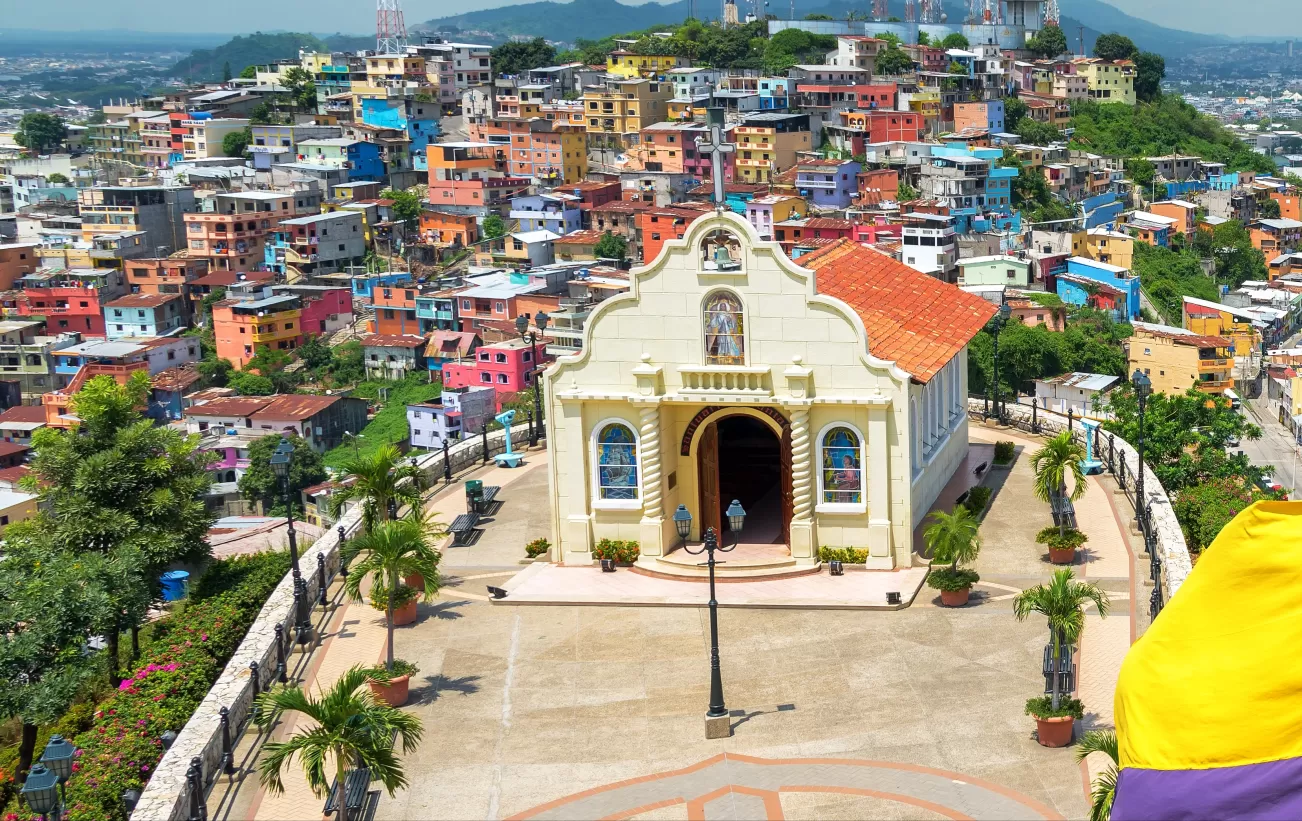Ecuador: Complex legacy of indigenous, colonial pasts

Named after Equator, the country was colonised by the Inca and Spanish empires before achieving independence in 1833. It has also been a part of several key scientific expeditions.
Ranu Joardar
Ecuador is located in northwestern South America. It is one of the most environmentally diverse countries and has even contributed to the environmental sciences such as establishing basic theories of modem geography and evolutionary biology.
Geography
Ecuador is named after Equator, which is the imaginary line around the Earth. While the Equator divides the country in two, most parts of it lie in the Southern Hemisphere. The country is bordered by Colombia and Peru. Andes Mountains are the backbone of the country; the Oriente in the east of the Andes is rich in oil Cotopaxi in the Andes is the highest active volcano in the world.
The Galapagos Islands, which lie 900 km west of Ecuador, are home to unique reptiles, birds, and plants. In the Costa or coastal plain region, most of the bananas in the world are grown.
Though Mount Everest's peak is the highest altitude above sea level, Ecuadors Mount Chimborazo is the highest point above Earth's centre. It is located at a degree south of the Equator where Earth's bulge is greatest. Despite having a height of only about 20.702 feet, it is the closest point on Earth to the stars.
History
Ecuador is a mixture of indigenous and colonial pasts. Most parts of the country were part of the Inca empire, the largest political unit of pre-Columbian America, Peru-centred Inca Empire in the 15th Century. A century later, it became a Spanish colony and remained under its rule for 300 years. The country gained independence from Spain in 1822.
However, the country's history dates back to long before even the Inca conquest. Pottery figurines and containers dating from 3000 to 2500 BC have been discovered, which makes them one of the earliest ceramics in the New World. By the 1400s,
Ecuador was divided among warring chiefdoms. Though the country had sophisticated raised-field cultivation systems and trade networks, it lacked cities and States until after the Inca conquest.
Flora and fauna
The wet lowlands of the Oriente and the northern and southeastern parts of the Costa are covered with tropical rainforests. Balsa trees, found in the Guayas River valley, are heavily exploited for their light wood. Meanwhile, the cinchona trees in the eastern forest have been a valuable source of quinine (medications to treat malaria) before its synthetic equivalents.
The rainforest is home to a wide variety of monkeys and carnivorous mammals such as jaguars, ocelots, foxes, weasels, otters, skunks, raccoons, coatis, and kinkajous. Besides, tapir, deer, and peccary are also found in the region. The region is home to about 1,500 species of birds such as condors, hummingbirds, blue-footed boobies, and parrots.
People and culture
The ethnic population includes several indigenous language-speaking people and highland and lowland Spanish-speaking mestizos (people of mixed indigenous and European descent). Most people describe themselves as mestizo.
The population also includes descendants of Africans and more-recent immigrants from countries such as Lebanon, China, Korea, Japan, Italy, and Germany.
Though Spanish is the official language, there are dialectal differences between Sierra and Costa Spanish. Sierra Spanish is influenced by Quichua. Quichua and Shuar (both of which are official intercultural languages) as well as other ancestral languages are spoken by the indigenous people.
Interestingly, people here identify more with their region or village than with the country. It can be said that the country may be divided into a dozen major folk-cultural regions such as norteno mestizo, northern Quechua, Esmeraldeno blacks, Shuar (Jivaro), and Amazonian Quechua.
Their holidays are associated with particular foods or drinks, and music. During Easter, the popular food, especially in the mountain highlands, is fanesca, which is a traditional Ecuadorian soup made with grains, vegetables, and hard-boiled eggs. Chilli sauce is part of most meals. In the coastal regions, the popular food is seviche, which is made with shrimp or shellfish or even mushrooms pickled with lemon juice, cilantro, and onions.
The country is a favourite tourist destination for its jazz, poetry readings, folk music, and arena rock concerts.
There are numerous architectural masterpieces in Ecuador such as the large tolas (pre-Inca ramp mounds) of the northern highlands, those protected at the Cochasqui archaeological park: the Inca stone walls of Ingapirca near Canar; the great colonial churches of Quito (especially San Francisco and La Compania) with their paintings and gilt wood carving. The old urban centre of Quito was designated a UNESCO World Heritage site in 1978, as was that of Cuenca in 1999.
Football is Ecuador's national sport. Their other fovourite sports include basketball and volleyball.
Scientific marvels
The first scientific expedition to measure the Earth's circumference, led by Charles-Marie de La Condamine of France, was in Ecuador. Renowned naturalists Alexander von Humboldt of Prussia and Charles Darwin of England conducted research in Ecuador to establish basic theories of modern geography, ecology, and evolutionary biology.
Picture Credit : Google